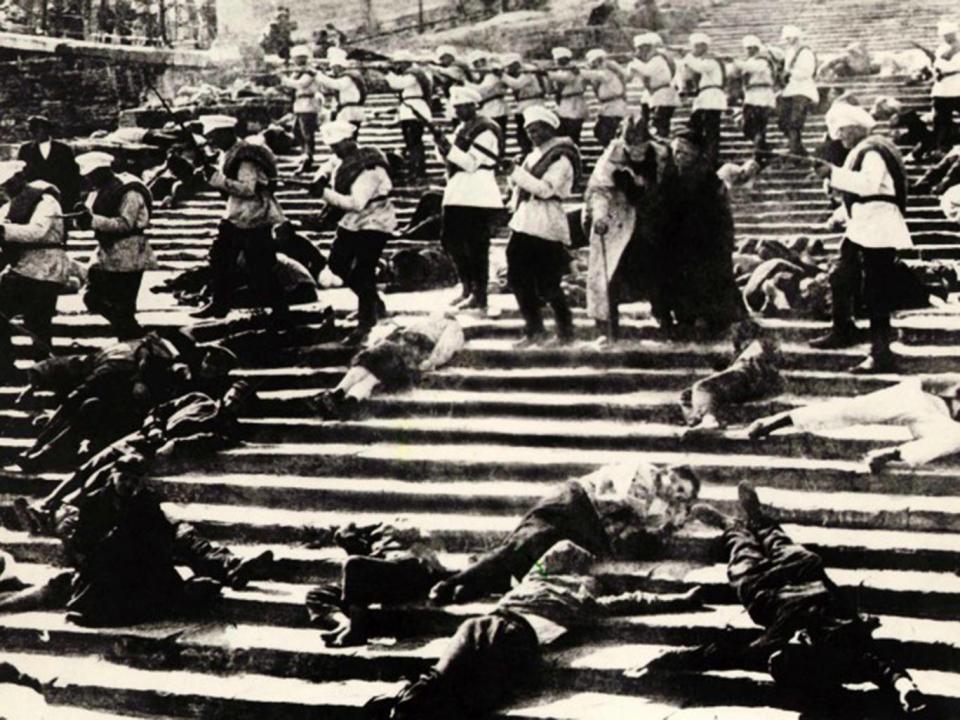Sergei Eisenstein: Who was the legendary Soviet film director who made Battleship Potemkin?
Today’s animated Google Doodle marks what would have been the 120th birthday of Russian filmmaker Sergei Eisenstein (1898-1948), a true giant of world cinema whose role in crafting the visual language of screen storytelling in the industry’s earliest days proved pivotal and whose legacy continues to influence directors in the 21st century.
Born in what is now Riga, Latvia, Sergei studied architecture and engineering at the Petrograd Institute of Civil Engineering before joining the Red Army and taking part in the Bolshevik Revolution. His role in creating successful propaganda for the cause led to his being awarded a command position in Minsk, Belarus, before he arrived in Moscow in 1920 to transfer his artistic skills to the theatre.
Working initially as a director and designer, he became intensely interested in cultural theory and wrote the treatise Montage of Attractions in 1923. This led to his making his first film, Gulmov’s Diary, the same year, an adaptation of one his own experimental theatre productions.
Eisenstein remains best known for the silent montage films that followed - Strike (1925), the ground-breaking Battleship Potemkin (1925) and October (1928), commissioned to celebrate the tenth anniversary of the October Revolution.
These films, concerning the power of the people to rise up, influenced contemporaries like Alexander Dovzhenko, Vsevolod Pudovkin and Dziga Vertov at a time when the progressive nature of Russian art left the world trailing in its wake. Only D.W. Griffith in the US and the likes of Fritz Lang, F.W. Murnau and Robert Wiene at Germany’s UFA studios came close to producing work to match their extraordinary output.
The international acclaim with which Eisenstein’s films were greeted saw him permitted to tour the world in the early 1930s, visiting Europe, Japan, the US and Mexico. The director was particularly smitten with the latter country where he socialised with Frida Kahlo and Diego Rivera and commenced an ambitious chronicle of Mexican history entitled Que Viva Mexico! that sadly remains one of cinema’s great uncompleted works. Eisenstein’s long sojourn in Mexico saw a worried Joseph Stalin send a telegram asking if he had deserted the Soviet Union.

However, it is arguably Eisenstein’s historical epics, Alexander Nevsky (1938) and the two-part Ivan The Terrible (1944 and 1958), that have left the most enduring impact on modern filmmaking. Both are vivid accounts of near-mythic men undertaken on a huge canvas, starring the great actor Nikolai Cherkasov and boasting scores composed by Sergei Prokofiev. As a marriage of music and action, the famous "Battle on the Ice" sequence from Alexander Nevsky, in particular, is once seen, never forgotten.
All of Eisenstein’s films were undertaken with political ends in mind, as the Kremlin approved all contemporary projects on the understanding that they would demonstrate to their own people and to the world at large the obvious supremacy of Communist art and the might of the USSR as a political force. Official approval nevertheless rarely prevented Eisenstein from falling foul of controversy.
Despite its being well received and Eisenstein awarded the Order of Lenin and Stalin Prize as a reward for his achievements, Alexander Nevsky had to be pulled from distribution following the signing of the Molotov-Ribbentrop pact in 1939, just prior to the outbreak of the Second World War. Its tale of a heroic Russian knight seeing off Teutonic hordes could all-too-easily have been misconstrued as a mischievous allegory for the contemporary geopolitical situation.

It was Ivan The Terrible though that would prove to be Eisenstein’s downfall. Originally intended as a trilogy of films about the reign of Tsar Ivan IV (1530-1584), Part Two was met with disapproval and immediately banned in 1948, interpreted as a veiled critique of Stalin at one remove in its overt attack on tyrannical leadership. It would not see the light of day for another decade. Scenes already filmed from a planned Part Three were confiscated and destroyed and the great man was left in disgrace.
Eisenstein suffered a severe heart attack in 1946 and died of a second in his Moscow apartment on 11 February 1948. He was cremated and his ashes buried amid the snow of the capital’s Novodevichy Cemetery.

 Yahoo News
Yahoo News 
